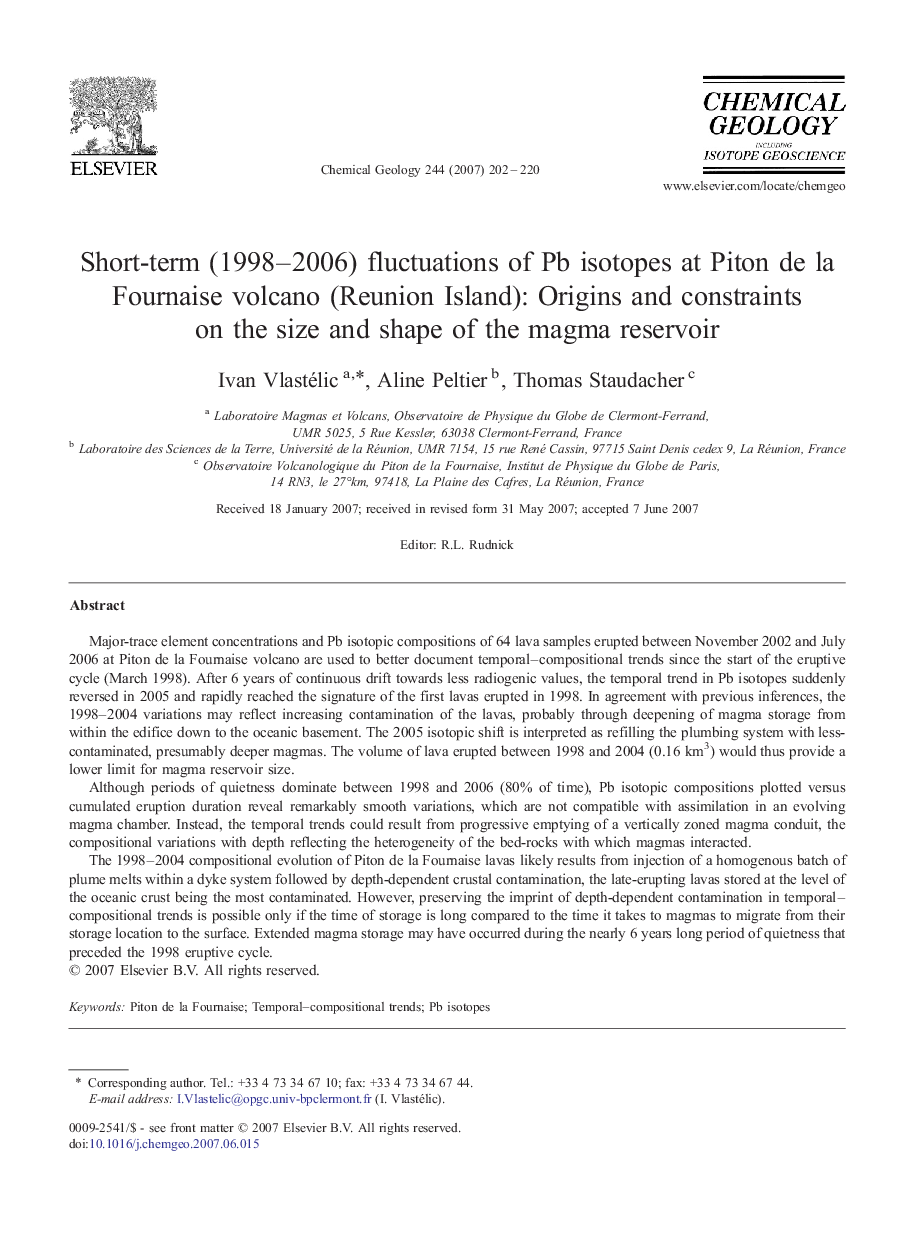| Article ID | Journal | Published Year | Pages | File Type |
|---|---|---|---|---|
| 4701060 | Chemical Geology | 2007 | 19 Pages |
Major-trace element concentrations and Pb isotopic compositions of 64 lava samples erupted between November 2002 and July 2006 at Piton de la Fournaise volcano are used to better document temporal–compositional trends since the start of the eruptive cycle (March 1998). After 6 years of continuous drift towards less radiogenic values, the temporal trend in Pb isotopes suddenly reversed in 2005 and rapidly reached the signature of the first lavas erupted in 1998. In agreement with previous inferences, the 1998–2004 variations may reflect increasing contamination of the lavas, probably through deepening of magma storage from within the edifice down to the oceanic basement. The 2005 isotopic shift is interpreted as refilling the plumbing system with less-contaminated, presumably deeper magmas. The volume of lava erupted between 1998 and 2004 (0.16 km3) would thus provide a lower limit for magma reservoir size.Although periods of quietness dominate between 1998 and 2006 (80% of time), Pb isotopic compositions plotted versus cumulated eruption duration reveal remarkably smooth variations, which are not compatible with assimilation in an evolving magma chamber. Instead, the temporal trends could result from progressive emptying of a vertically zoned magma conduit, the compositional variations with depth reflecting the heterogeneity of the bed-rocks with which magmas interacted.The 1998–2004 compositional evolution of Piton de la Fournaise lavas likely results from injection of a homogenous batch of plume melts within a dyke system followed by depth-dependent crustal contamination, the late-erupting lavas stored at the level of the oceanic crust being the most contaminated. However, preserving the imprint of depth-dependent contamination in temporal–compositional trends is possible only if the time of storage is long compared to the time it takes to magmas to migrate from their storage location to the surface. Extended magma storage may have occurred during the nearly 6 years long period of quietness that preceded the 1998 eruptive cycle.
